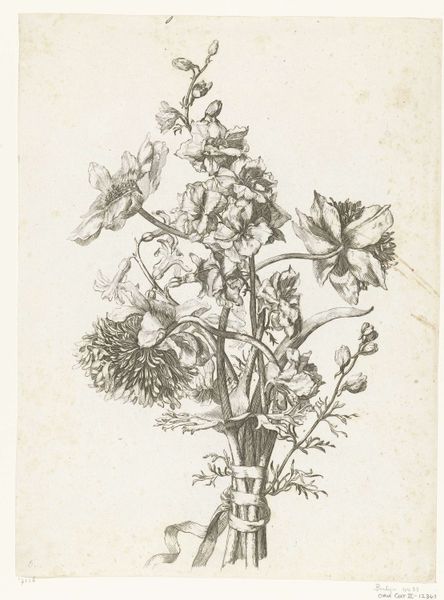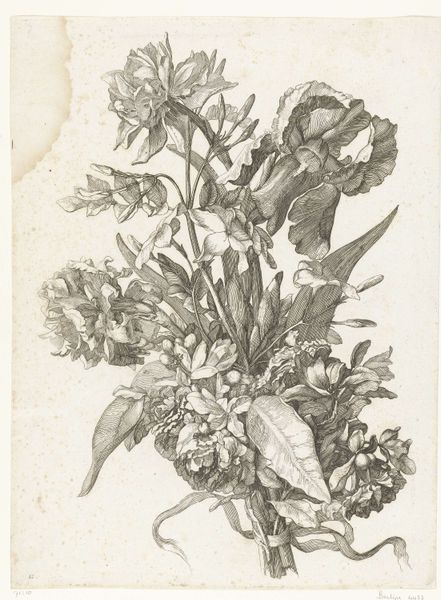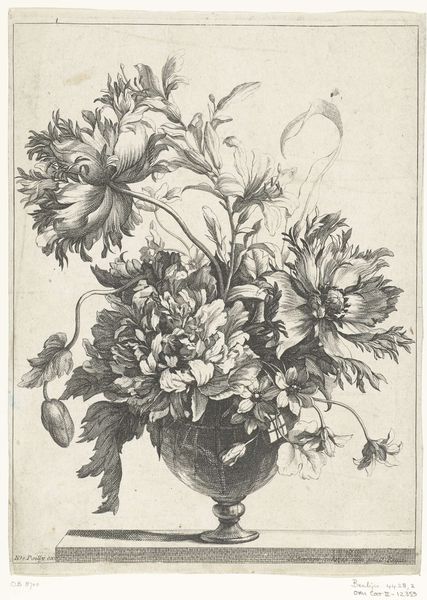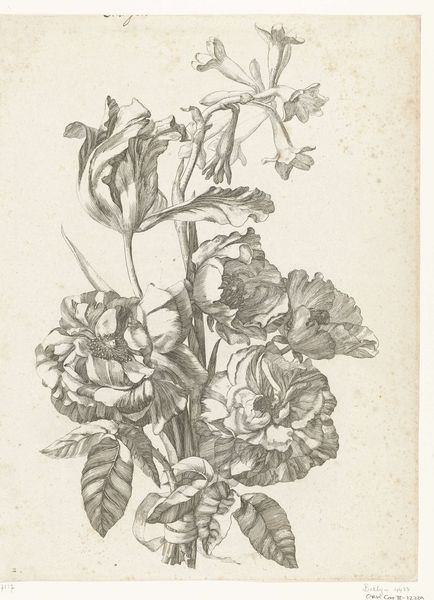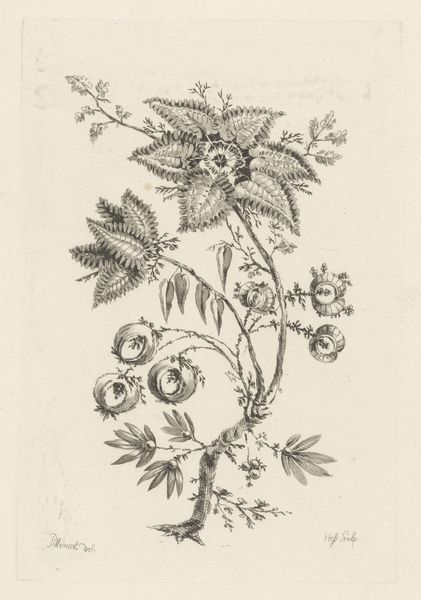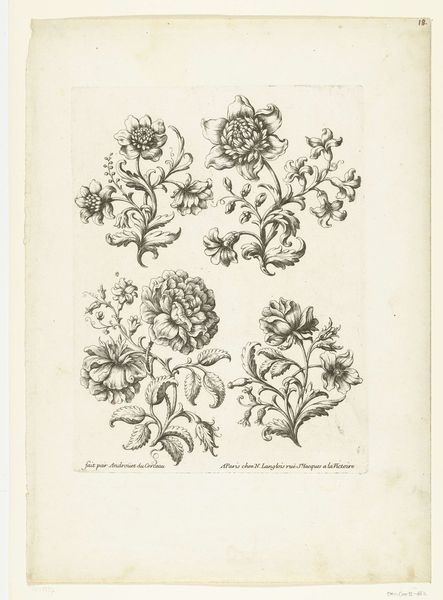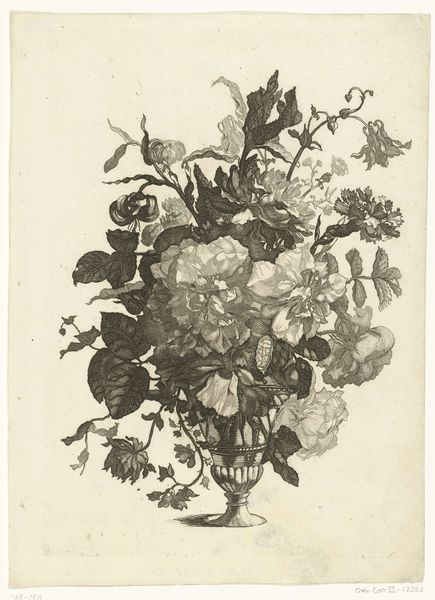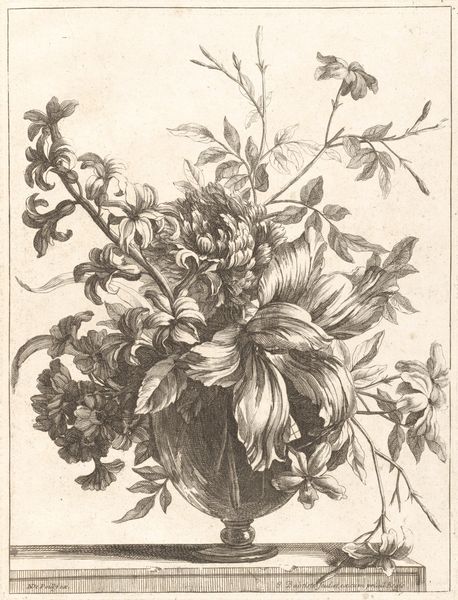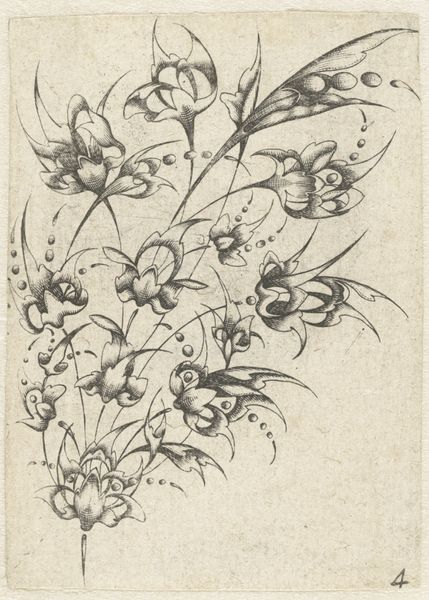
drawing, paper, ink
#
drawing
#
baroque
#
pen drawing
#
dutch-golden-age
#
paper
#
ink
#
botanical drawing
Dimensions: height 308 mm, width 224 mm
Copyright: Rijks Museum: Open Domain
Curator: This delicate ink drawing presents us with a meticulously rendered “Bouquet of Anemones,” created around 1670 by Jacques Bailly. It's part of the Rijksmuseum's collection. Editor: It’s remarkably detailed. At first glance, it feels almost photographic in its precision, yet there’s a fragility to the lines that adds to its quiet beauty. Curator: Absolutely. Bailly, a master of the Dutch Golden Age, uses the ink medium to its fullest, capturing the textures and forms with almost scientific accuracy. The bouquet becomes a symbol itself, echoing the ephemeral nature of beauty and life so appreciated in that era. Editor: These flowers, the anemones in particular, have long held symbolic weight. Aren’t they often associated with sorrow or fading love? Curator: Precisely. The choice of anemones carries cultural weight, subtly hinting at transience amidst apparent abundance and decorative opulence. We see these complex visual allegories woven through the status displays of the Dutch Golden Age. Editor: So it's not just a pretty picture. There’s a deliberate emotional undercurrent. What about the technique itself? I’m struck by the contrasts between dense hatching and very spare, open space. Curator: That variation in line weight creates a sense of volume and depth. Consider how he captures the light playing on the petals, drawing our eyes into the heart of each bloom. This botanical precision also reflected a burgeoning scientific curiosity in the 17th century. Editor: A controlled yet still emotionally potent rendering… This era’s artists walk a fine line between objective representation and allegorical narrative. What could this have signified to the person commissioning this kind of image at the time? Curator: The appreciation for detailed studies like these extends beyond aesthetics. Perhaps a display of their wealth and appreciation for botanical novelties in a period of expanding global trade, whilst also inviting a contemplative perspective on time and loss. Editor: In a sense, this small piece contains a much larger meditation on wealth, beauty, and the fleeting nature of existence. Seeing that opens new possibilities of looking at the entire period. Thank you. Curator: My pleasure, thinking with and through images – that's the core of it.
Comments
rijksmuseum about 2 years ago
⋮
These two prints are from a series of twelve bouquets that the French miniature painter Jacques Bailly etched around 1670. The way in which the flowers, loosely gathered with a ribbon, are depicted is not only true-to-life, but also quite remarkable. The artist rendered the various tonalities and shaded passages with parallel lines only, which vary in density and thickness.
Join the conversation
Join millions of artists and users on Artera today and experience the ultimate creative platform.
